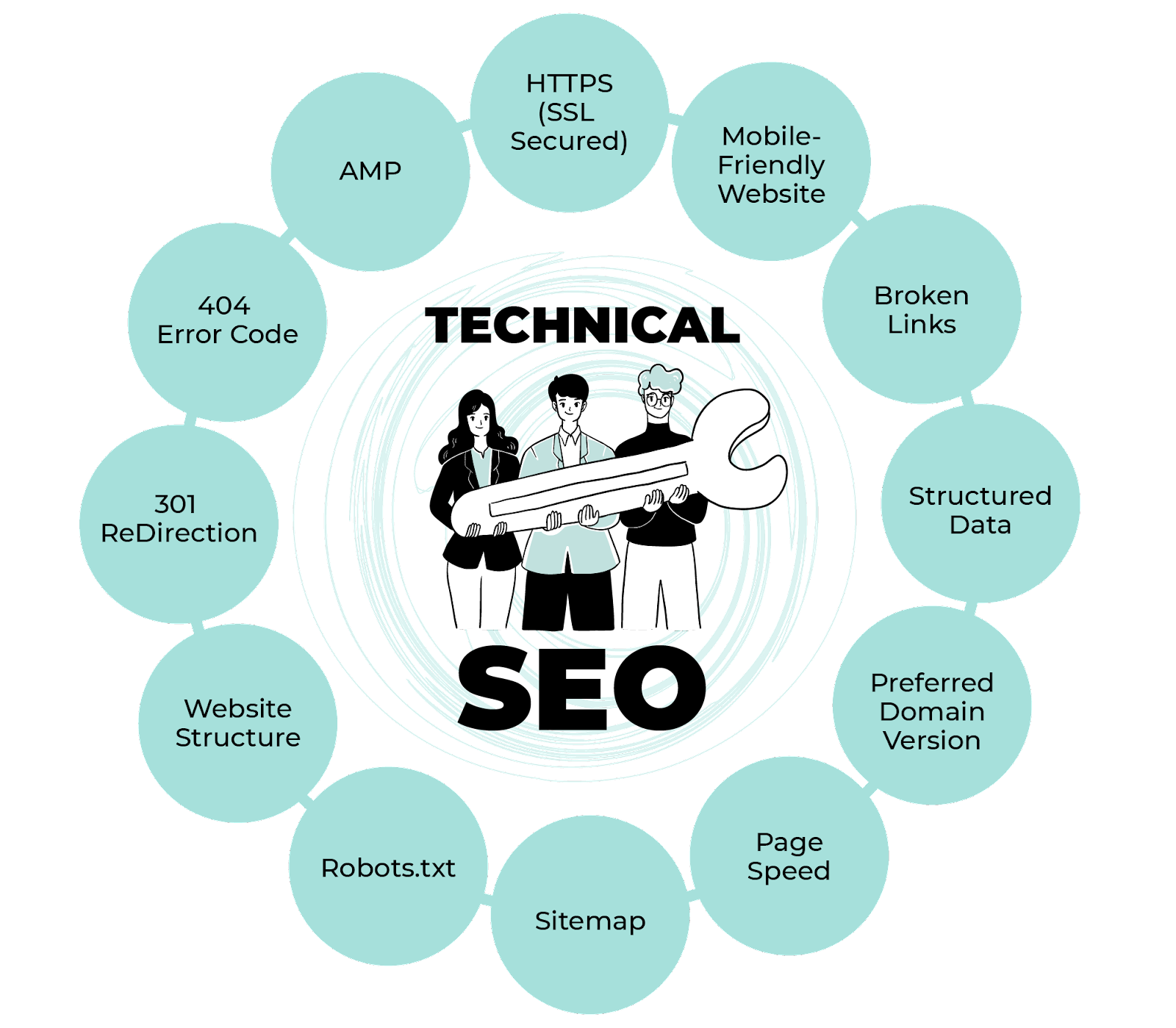In the world of SEO, there’s more to success than just creating great content and building backlinks. Technical SEO plays a critical role in improving your website’s visibility and ensuring optimal performance. By addressing the technical aspects of your website, you can lay a solid foundation for search engines to crawl, index, and rank your pages effectively. In this comprehensive guide, we’ll delve into the realm of technical SEO, exploring key strategies and best practices to enhance your website’s performance and drive organic traffic.
- Understanding Technical SEO: To begin our journey, let’s explore what technical SEO entails. It encompasses various elements such as website structure, site speed, mobile-friendliness, URL structure, crawlability, and more. These technical aspects directly impact how search engines perceive and rank your website. By optimizing these factors, you can improve user experience, increase search engine visibility, and ultimately drive more organic traffic.
- Website Performance Optimization: A crucial aspect of technical SEO is optimizing your website’s performance. Slow-loading pages can frustrate users and negatively impact your search engine rankings. We’ll discuss techniques like minimizing HTTP requests, optimizing image sizes, leveraging browser caching, and using content delivery networks (CDNs) to speed up your website and enhance the user experience.
- Mobile-Friendly Design: With the rise in mobile usage, having a mobile-friendly website is no longer optional—it’s essential. We’ll explore responsive design, mobile usability best practices, and the importance of mobile optimization for SEO. Implementing a mobile-friendly design not only improves user experience but also helps you rank higher in mobile search results.
- Site Structure and URL Optimization: Creating a clear and logical site structure improves both user navigation and search engine crawling. We’ll discuss techniques like organizing content into relevant categories, using breadcrumbs, optimizing URL structure, and implementing canonical tags to eliminate duplicate content issues. A well-structured site ensures that search engines can easily understand and index your content, enhancing your website’s overall SEO performance.
- XML Sitemaps and Robots.txt: XML sitemaps and robots.txt files are essential tools that guide search engine crawlers on how to interact with your website. We’ll delve into creating and submitting XML sitemaps to ensure all your important pages are discovered and indexed by search engines. Additionally, we’ll explore how to utilize robots.txt files to control crawler access, optimize crawl budget, and protect sensitive information.
- Fixing Technical Issues: Technical SEO also involves identifying and fixing common issues that can hinder your website’s performance. We’ll cover important areas such as broken links, 404 errors, duplicate content, crawl errors, and more. By conducting regular website audits and resolving these issues, you can enhance your website’s SEO health and improve user experience.
- Schema Markup and Structured Data: Implementing schema markup and structured data can provide search engines with additional context about your content, enabling them to display rich snippets in search results. We’ll explore the benefits of schema markup, discuss different schema types, and guide you on how to implement structured data to enhance your website’s visibility and attract more targeted traffic.
- Continuous Monitoring and Optimization: Technical SEO is an ongoing process, and it’s crucial to regularly monitor your website’s performance and make necessary optimizations. We’ll discuss tools and techniques for monitoring key metrics, tracking crawl errors, analyzing website performance, and staying updated with the latest SEO trends and best practices.
Mastering technical SEO is essential for optimizing your website’s performance and driving organic traffic. By implementing the strategies and best practices discussed in this guide, you can ensure that your website is easily discoverable, accessible, and appealing to both search engines and users. Remember, a strong technical foundation





